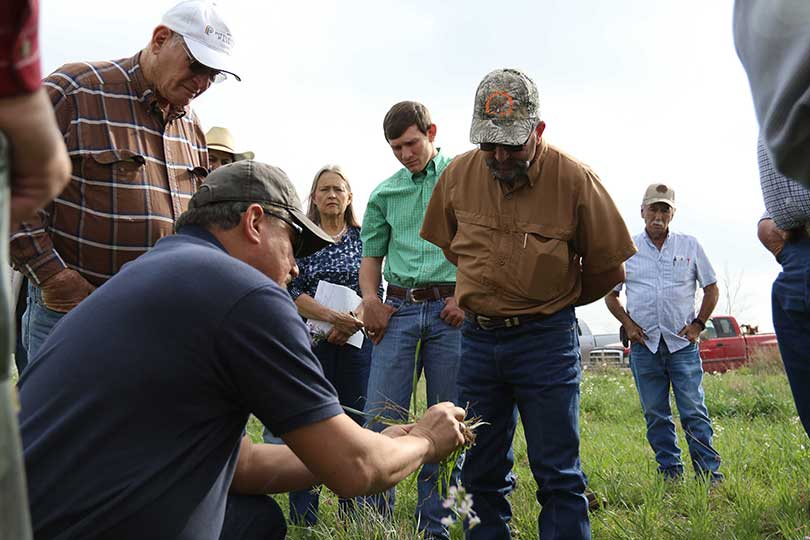By Justin Green
Staff Writer
Cover crops recharge the soil, help increase future harvests and feed cattle. Because of that, more and more Texas farmers and ranchers are starting to grow them.
The idea of planting these crops is not to sell them, but to “restore the soil,” said William Durham, a Natural Resources Conservation Service (NRCS) soil health specialist.
“You’re taking a degraded soil in a degraded condition and enhancing those ecosystem processes that used to provide you services before,” Durham explained.
Though cover crops are beneficial to the soil, it’s not a quick process.
“You have to be very careful that first year because those particular crops end up tying up some of your nitrogen in your soil. You have to be aware of that so when you make the transition, you can adequately fertilize to account for that,” Durham said. “When you get the soil cycle, the water cycle and the aggregation to work, your production will follow.”
Aside from restoring the soil, some Texas farmers, like Texas Farm Bureau State Director Zack Yanta, are grazing cattle on the crops.
When cattle graze the land, they help terminate the annual plants. From there, the root system starts to decompose. And beneath the surface, bacteria start decomposing the root system.
That’s when earthworms get involved in the soil system.
“Earthworms don’t only eat organic matter, they come up to the top of the soil and they pull residues down into their tunnel. A lot of what they do, the big earthworms, they pull that material down and they partially digest it,” Durham said.
From there, they regurgitate the material back out into the tunnel they create.
“What they just did there is they inoculated that material with bacteria. Then the bacteria start to grow,” Durham said. “They leave all of this predigested material. So when they come back out of their tunnel, they eat all of that material that is full of that bacteria.”
Earthworms have nephridia organs that excrete their excess nitrogen. The bacteria worms consume are very nitrogen-rich. So when earthworms consume it, they don’t need as much nitrogen. They have an excess amount that they excrete through the nephridia. That nitrogen is what lines the worm’s tunnel and is available to the plant, Durham said.
When it comes to feeding hay, Durham urges farmers to feed where the hay was cut. When farmers do this, it helps complete the cycle of the pasture’s nutrients, rather than give that pasture’s nutrients to a different pasture.
“We don’t want to remove any of the nutrients from the farm. That’s what grazing does. It keeps those nutrients on the farm’s cycling,” Durham said.
Durham urges farmers to plant multiple species in cover crops. He says this for two reasons.
The reason farmers need “a diversity of plants is different plants put out different types of organic acids and amino acids and they stimulate different types of bacteria at different stages of growth,” Durham said.
The final reason to plant multiple species is “you want to put covers in there that have both high and low carbon to nitrogen ratios and so when you have diversity like that, cattle don’t pick and choose what they need. If all they have to eat is wheat and it is in the early stage, it’s going to have a lot of nitrogen in it and not a lot of fiber. Because ruminants need a lot of fiber, that’s another purpose of growing multispecies cover crops,” Durham said.
Cover crops are a timely process, but if done properly, can improve soil health and, in return, provide better commodity yields.

